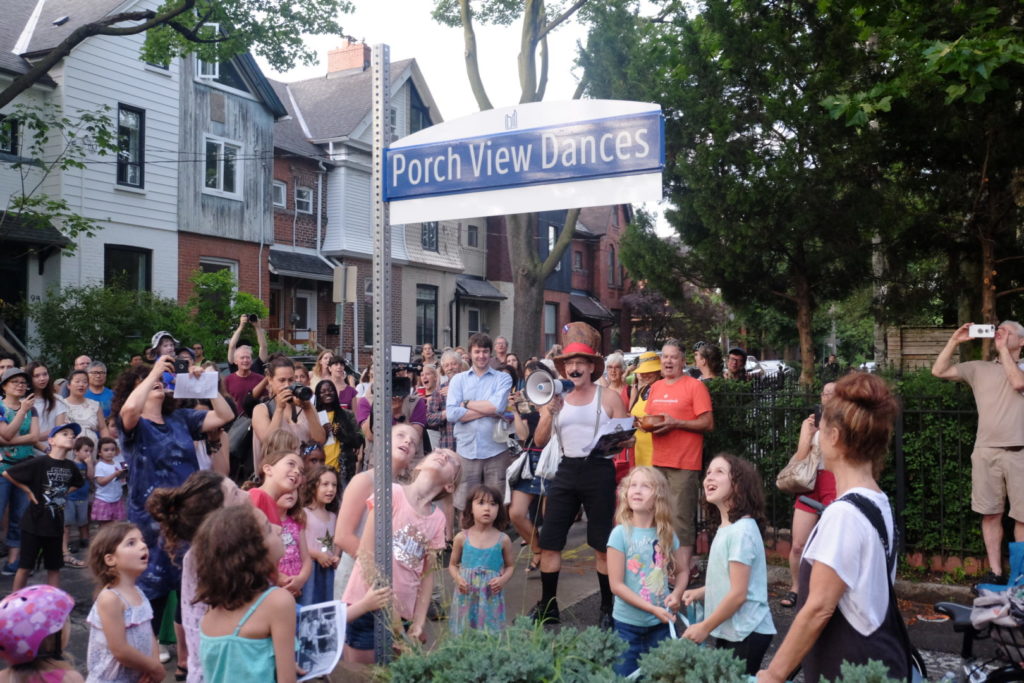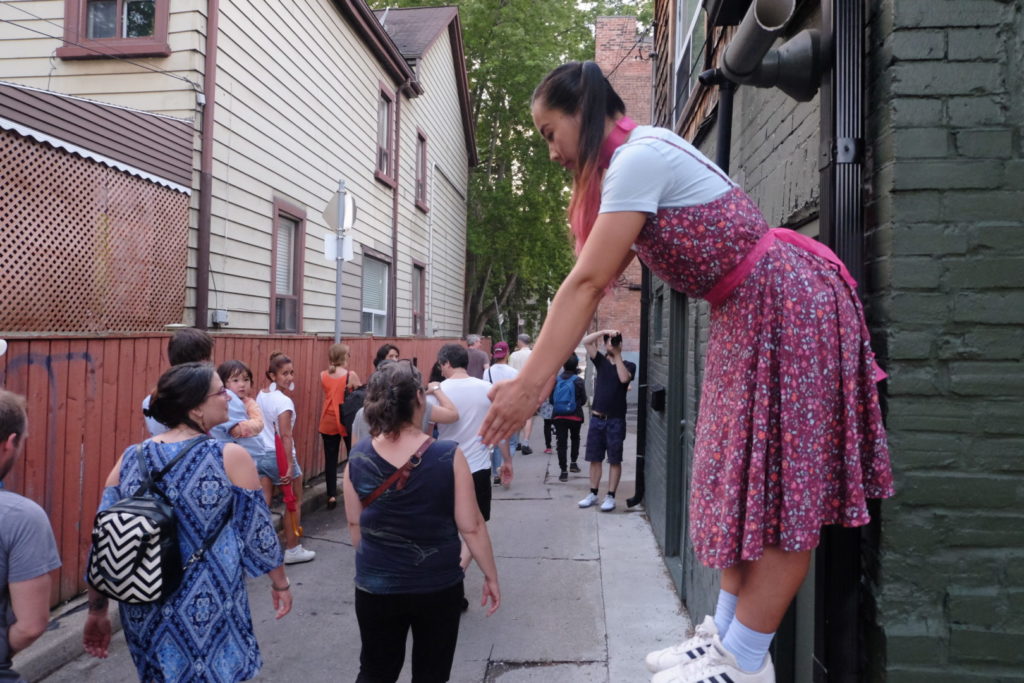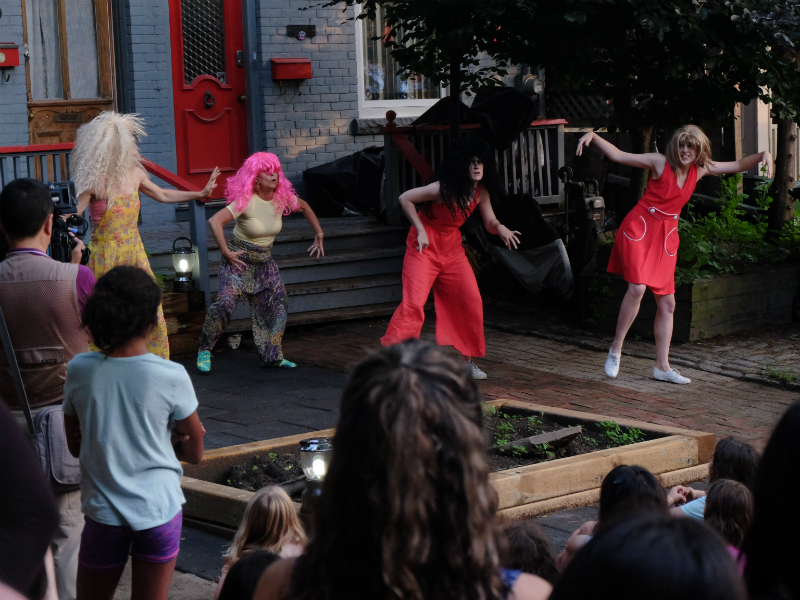It was a sticky summer evening in July, humid from an afternoon thunderstorm, but 300 people had nonetheless crowded around a modest laneway in downtown Toronto to watch their neighbours dance for free. A clown performer with a grandiose fake moustache, dressed up in a cowboy-brown top hat and clip-on suspenders, corralled the audience around the laneway’s unassuming focal point: a black velvet curtain conspicuously covering a shiny new sign post.
Behind the curtain stood the pristine street sign for Porch View Dances Lane, one of the city’s newest laneways, named after a community dance troupe founded by local Jewish artist and choreographer Karen Kaeja.

Kaeja rode her bicycle down the lane for the big reveal, yanking down the velvet curtain and draping it like a cape over her shoulders. The clown — her husband and colleague, Allen Kaeja — led the procession of 300 bystanders with an announcement met with perhaps less enthusiasm than he’d hoped: “The streets are now ours… for dancing!”
This was the eighth annual Porch View Dances festival, a five-day community event that the Kaeja couple organizes every summer in Seaton Village, where they live. It is a different kind of dance show: instead of professional dancers, they work with community members; instead of a traditional venue, shows are staged on neighbourhood porches.
Last year, Kaeja submitted an application to have a lane named after the stalwart festival, off London Street, near her house. It is the same laneway that hosted the first-ever Porch View Dances eight years ago. After her husband looked into the process, they realized it was surprisingly simple: the City of Toronto just needs a strong application with references and community support. The Kaejas gathered all that, including media reviews and letters from neighbourhood supporters.
When the city accepted their application, Kaeja was shocked. “I was not expecting it at all,” she says. “I was very surprised and thrilled. It’s not really about me — it’s a slight nudge of an approval of the arts.”
Promoting the arts to the government and public is essentially the raison d’être of Porch View Dances itself. Kaeja conceived the idea years ago, in her living room, during a meeting for her dance company. She glanced out the window and noticed her neighbours interacting on their porch — “like a silent movie,” she recalls, “with all these gestures and interactions.” The movements struck her as beautiful. Her colleagues were discussing annual budgets, but she turned around and interrupted them with the idea.
“It was just so vivid and so real,” she says. “I just had to let everybody know.”
READ: AMATEUR DANCERS PERFORM ON PORCHES IN ANNUAL FESTIVAL
The idea was to pair non-professional dancers with professional choreographers and spend a few weeks rehearsing, ultimately inviting passers-by to pay what they can to watch. Interested performers submit an application, including a short questionnaire about themselves and why they want to be involved. This year, Kaeja estimates they received around 20 submissions, of which they chose three.
“We try to keep a cross-section of people, so we’re open to those of different abilities and backgrounds,” Kaeja says. “We actually love it when there is no dance background: it’s about generating a love of movement.”

This year, Ilana Bereskin and her four-year-old daughter, Ahava, capped off the dewy evening of dance. In front of their white Seaton Village home, the duo began their performance in a child’s playhouse, with Ahava wiggling her limbs out the door. Ilana appeared from behind a large tree and joined her daughter, blowing bubbles and swinging Hula Hoops around their garden.
“I used to love dancing,” Bereskin says. As a new parent, she had to cut back on the hobby, but realized motherhood opened a whole new avenue of creativity.
“There’s a different creativity in that, and I wanted to bring it together — the creativity of the relationship with my daughter.”
Kaeja choreographed the Bereskins’ performance personally with a collaborative approach, which was both necessary and challenging for a four-year old.
“It was a lot of work for Ahava for a couple weeks,” Bereskin says. “I think children need to play — and this was a playful piece — but there was work involved in building it.”
After their performance ended, the crowd moseyed on to nearby Vermont Square Park, where they all joined in a bouncy, light, sometimes meditative dance as the sun set into shades of orange and purple behind them. It was the only proper way to end the night: bringing people out of their homes, into the streets, dancing together.
